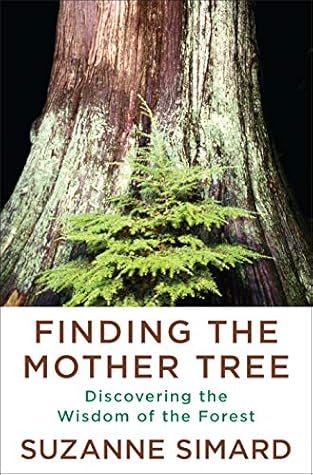More on this book
Community
Kindle Notes & Highlights
Mother Tree would have a choice of where to send the last of her energy: to her kin, the stranger, or into the earth.
This pales in comparison to the myriad calamities that can happen in even the most well-conceived field experiment, especially over the decades it takes to examine long-term patterns. No wonder most scientists conduct their research in a lab, I thought to myself.
Monika’s Mother-Tree seedlings transmitted more carbon to kin than strangers, as Brian and Amanda had found. But unlike the earlier study, where we’d only detected carbon moving into the mycorrhizal fungi of the kin seedlings, Monika now found that it went straight into their long leaders.
The data also showed that injury, whether by western spruce budworm or the shears, induced the Mother-Tree seedlings to transfer even more carbon to her kin. Facing an uncertain future, she was passing her life force straight to her offspring, helping them to prepare for changes ahead.
Dying enabled the living; the aged fueled their young.
reductionist science so often misses, leading us to mistakenly simplify our societies and ecosystems.
elders that survived climate changes in the past ought to be kept around because they can spread their seed into the disturbed areas and pass their genes and energy and resilience into the future. Not only a few elders, but a range of species, of many genotypes, kin and strangers, a natural mix to ensure the forest is varied and adaptive.
harvesting the dying Mother Trees, might be compelled to leave a portion behind to take care of the young, not merely their own but those of their neighbors too. In the wake of diebacks from droughts, beetles, budworms, and fires, the timber industry has been cutting vast swaths of forest, the clear-cuts coalescing over whole watersheds, entire valleys mowed down. The dead trees have been considered a fire risk, but more likely a convenient commodity.
This salvage clear-cutting has been amplifying carbon emissions, changing the seasonal hydrology in watersheds and in some cases ...
This highlight has been truncated due to consecutive passage length restrictions.
fifty-meter-tall cedar on a high bench, her leader forked in a candelabrum, what the Heiltsuk called a Grandmother Tree.
An old cedar tree could hold a thousand-year record of salmon runs.
my salmon trip showed that with taking something comes the obligation to give back.
k̓wseltktnews (translated as “we are all related”) or the Salish concept of nə́c̓aʔmat ct (“we are one”). We must heed the answers we’re being given. I believe this kind of transformative thinking is what will save us. It is a philosophy of treating the world’s creatures, its gifts, as of equal importance to us. This begins by recognizing that trees and plants have agency. They perceive, relate, and communicate; they exercise various behaviors.
one forest, one lake, this ripples through the entire complex web. Mistreatment of one species is mistreatment of all.
The rest of the planet has been waiting patiently for us to figure that out. Making this transformation requires that humans reconnect with nature—the forests, the prairie, the oceans—instead of treating everything and everyone as objects for exploitation.
I felt that if there was anywhere that the earth held the power to heal, it would be here on the Pacific Coast in one of the most productive rain forests in the world.
student Gabriel had found that even hemlock saplings like these, whose roots gripped old nurse logs, could also connect with nearby Mother Trees, and they received carbon from the powerful crowns until they themselves were self-sufficient providers.
Bit by bit, with the help of the Mother Trees, the creatures—fungi and bacteria, plants and centipedes—were working together to heal the wounds of this exploited, majestic place.
in clusters, not in rows.” Trees need to be near one another, to establish in receptive soil, to join together to build the ecosystem, mix with other species, relate in patterns
The properties of an ecosystem breathe with health, productivity, beauty, spirit. Clean air, clean water, fertile soil. The forest is wired for healing in this way,
and we can help if we follow her lead.
The seeds here had germinated in the vast mycorrhizal network of this parent. Their nascent roots drank from the nutritious soup supplied through her web. The shoots received messages about her past struggles, giving them a head start.
Their response was this plumage of emerald.
The Mother Tree Project consists of nine experimental forests located across a “climate rainbow” in British Columbia—from hot and dry forests in the southeast corner of the province to cold and wet stands in the north-central interior.
Our goal is to further develop an emergent philosophy: complexity science.
complexity science can transform forestry practices into what is adaptive and holistic and away from what has been overly authoritarian and simplistic.
lost understanding about the amazing capacities of nature—that’s driving a lot of our despair, and plants in particular are objects of our abuse. By understanding their sentient qualities, our empathy and love for trees, plants, and forests will naturally deepen and find innovative solutions.
Turning to the intelligence of nature itself is the key.


